The Queen Elizabeth-class aircraft carriers, comprising HMS Queen Elizabeth and HMS Prince of Wales, are the largest and most advanced warships ever built for the Royal Navy.
The development of the Queen Elizabeth-class began in the late 1990s. The Strategic Defence Review (SDR), initiated by the Labour government in 1997, aimed to reassess the UK’s defence strategy.
Published in July 1998, the SDR highlighted the strategic importance of aircraft carriers for offensive air operations, particularly in scenarios where foreign bases might not be available.
The review recommended replacing the ageing Invincible-class carriers with two larger vessels, envisaging ships of around 30,000 to 40,000 tonnes capable of deploying up to 50 aircraft, including helicopters.
Initial design studies started in the mid-1990s, exploring options such as extending existing hulls, converting commercial ships, and building new purpose-built carriers. By 1999, two consortia led by BAE Systems and Thales Group were awarded detailed assessment contracts.
The design process advanced significantly by 2006, leading to the announcement of the contract in July 2007. Formal signing occurred on 3 July 2008, involving the Aircraft Carrier Alliance, a partnership of Babcock International, Thales Group, A&P Group, the UK Ministry of Defence, and BAE Systems.
The construction of the Queen Elizabeth-class carriers faced several delays and budget adjustments. The initial plan was to build two carriers, but financial constraints and strategic reassessments influenced the timeline and scope of the project.
HMS Queen Elizabeth
- First Steel Cut: July 2009
- Named: 4 July 2014, in honour of Elizabeth I
- Launched: 17 July 2014
- Commissioned: 7 December 2017
- Sea Trials: Commenced June 2017
HMS Prince of Wales
- First Steel Cut: May 2011
- Launched: 21 December 2017
- Commissioned: 10 December 2019
Cost and Budget Considerations
The programme, initially budgeted at £3.9 billion, faced various challenges, including design changes and delays, which increased costs to £6.2 billion. The 2010 Strategic Defence and Security Review (SDSR) resulted in significant strategic decisions, including a proposal to convert one carrier to CATOBAR (Catapult Assisted Take-Off But Arrested Recovery) configuration to accommodate the F-35C variant.
However, cost projections for this conversion doubled, leading to a reversal of this decision in 2012, and both carriers were completed with the original STOVL (Short Take-Off and Vertical Landing) configuration for the F-35B.
Design and Capabilities
The Queen Elizabeth-class carriers have a displacement of approximately 65,000 tonnes, making them the largest warships ever built for the Royal Navy. They measure 284 metres in length and have a flight deck capable of supporting various aircraft types, more on that later.
Propulsion and Power
These carriers use an Integrated Electric Propulsion system, combining two Rolls-Royce Marine Trent MT30 gas turbines and four Wärtsilä diesel generators. This system powers four GE electric propulsion motors, driving the twin fixed-pitch propellers and enabling a range of 10,000 nautical miles.
Air Wing and Innovations
Typically, each carrier can deploy up to 24 F-35B Lightning II stealth fighters and a mix of Merlin helicopters for utility and Airborne Early Warning roles, with the capacity to surge up to 36 F-35Bs if necessary.
The design also includes two large aircraft lifts, each capable of transferring two F-35-sized aircraft from the hangar to the flight deck in 60 seconds. The vessels feature dual island superstructures, separating navigation and air operations, enhancing both efficiency and redundancy.
Future Enhancements
Future plans include Project Ark Royal, which envisions integrating catapult-assisted take-off systems and unmanned aerial vehicles (UAVs). These upgrades aim to maintain the carriers’ relevance in an evolving technological landscape.
Challenges and Operational Issues
Initially budgeted at £3.9 billion, the program has faced various challenges, including design changes and delays, which have increased costs to £6.2 billion.
Both carriers have experienced operational issues. In August 2022, HMS Prince of Wales suffered a propeller shaft coupling failure, requiring extensive repairs. Similarly, in February 2024, HMS Queen Elizabeth withdrew from a major NATO exercise due to a propeller shaft issue.


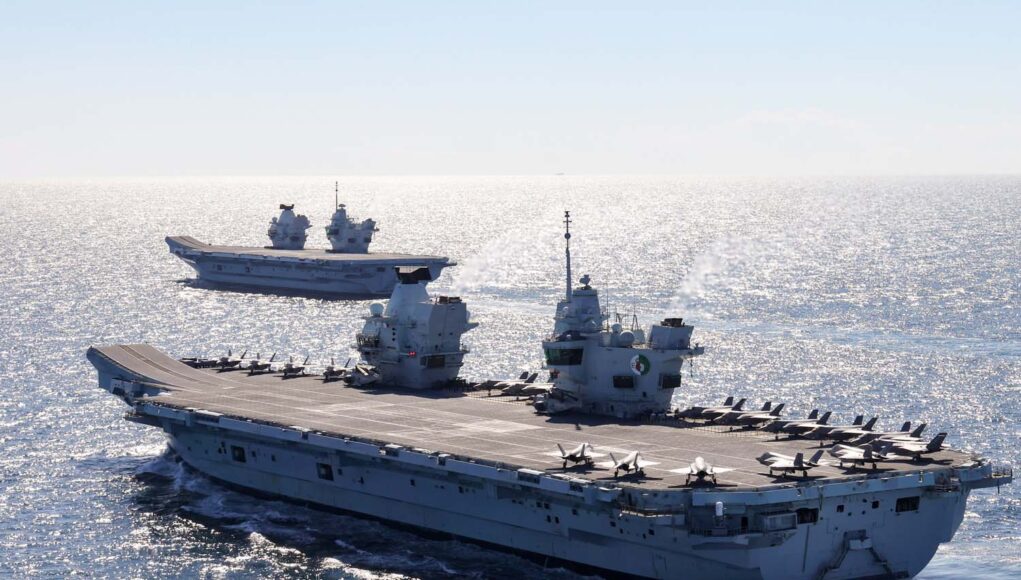
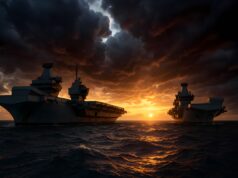
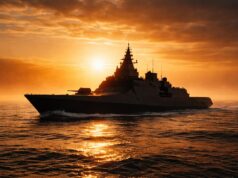

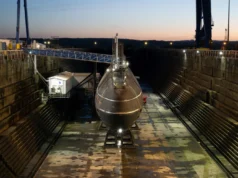
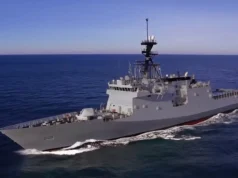
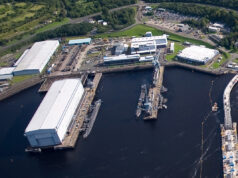
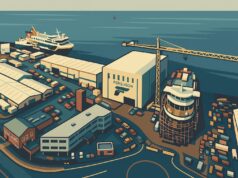
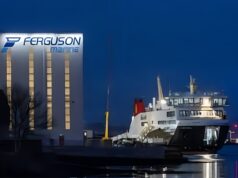
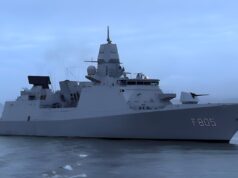
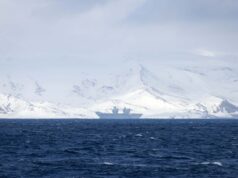

On the propeller shaft issue at least Pwls mishap has lead to a redesign that they’re now implementing on the Qnlz as well. Really can’t prototype how these things will behave until you’ve got the whole vessel together.
They knew the prop shafts were out of line just after fitting but they brushed it a side saying they were within tolerances. Just another way of saying they weren’t fitted perfect. But I reckon once the ships were handed over and commissioned any repairs become the responsibility of the taxpayers to pick up the tab.
Pretty sure that if necessary it can surge to well over fifty F-35Bs and up to twenty additional Cabs. Thirty-six is definitely on the low side of what it can carry and a number promulgated by politicians who don’t want to pay for sufficient aircraft.
Agreed, the max is around 70 jets
1) This is true, but nobody actually does this including the US.
You’re talking a Falklands War type scenario. The Americans quote the max use case, but don’t deploy with near that many aircraft.
2) Although scrapping the Harriers was stupid, they’re saying 138 still.
If anything, the slow pace of the F-35 programme is to blame. It’s years late and LM are having software issues with Block IV/TR3 even before weapons integration.
Even the USAF are refusing to accept orders and there are at least 100 F-35s parked up, waiting for software upgrades. We are deploying with 24 F-35B in the Indo-Pacific next year. Not even the US are deploying 24 F-35 on a carrier as of yet. It’s the slow pace of the programme and the fact that the C variant/EMALS integration is a mess.
Thus far, all orders have been incremental. When we ordered 48, everyone said that thats the final number, then we ordered another 24 the next production lot. No other country even has orders beyond the same production lot and the 138 number is still there.
Both Tories and Labour have said that the number will be finalised in the 2025 Foreign Policy Review. No point complaining about that.
Certainly keeping the harriers would’ve helped with numbers. But the RAFs harriers utility for carrier ops would’ve been pretty questionable as they had no radar.
Mate, one the dumbest things the MOD did in the 2004 defence review was scrapping the Sea Harrier FA 2!
I dont know much about that time period. Obviously theyd chosen not to get modern harriers to replace the FA2s, how long could they have continued to serve if theyd not been scrapped? Ignoring obviously that the entire force got shuttered in 2010.
Hi Hugo. Given they entered service in the early 1990’s,I imagine they could have served to 2022? (with required upgrades). It was a remarkable asset for it’s time. The first Western aircraft with true look down/ shoot don radar missile capability , paired to the new AMRAAM missile.
Nice bit of commentary ADA , cheers for the interesting post!
That’s 138 F-35B’s over the lifetime of the programme, not 138 all on the books at some date in the future.
When the current issues are sorted oiut . which they will be. the carriers offer a strategic presence on the world’s oceans unmatced by any other Eropean nation.
Any news on the QE’s state of refit?😶🕳️
There was a navy lookout article recently. But short of it is they’re extending the period in dock to install an improved design of propeller shaft that Pwls now has. They were going to do it next year but obviously then they’d have to work on the same area again.
Next year will be the hull certification and SVRL landing lights.
Hi Hugo, thanks for the info. Glad to see there’s some coordination involved. 👍😊🕳️
The report misses how the ships were built in/near Gordon Brown’s constituency for Labour votes but guaranteeing Scottish poor quality and cost overruns. Clearly there was a lack of proper quality testing. The Navy is exposed on poor quality for new ships built in Scotland
What utter rubbish Chris. There is no evidence whatever that problems with the carriers rest with the facilities at Rosyth and the Scottish workforce.
7 billion pounds spent on unreliable POS ships that spend more time in dry dock that out at sea.
Makes the Russian aircraft carrier look reliable and dependable.
Idiot. 🙄🕳️
Oh my God, quit it with these boring, over-reactionary and hyperbolic comments. It’s dull and predictable.
Totally agree, every new ship class has proplems, it’s obvious, what I would like is to actually read anything about these to great pieces of British engineering without being constantly reminded of how much they cost 🇬🇧🇬🇧🇬🇧
Well said Leh 🙌
QE class have actually been at sea more than the average carrier.
This is in spite of the fact that POW has been in dry dock for at least 6 months to fix the propellar shaft for good and QE is now getting the final solution.
QE class is possibly the most successful carrier system since WW2 imo if you look at price, sortie rate, reliability and modularity.
They have the same sortie rate as Nimitz class and the modularity/deck space makes it easy to retrofit catapults.
The idea that the QE class is a failure is laughable. On paper, please tell give me a better carrier design. The US could have and crew approx 30 QE classes with catapults for the inflation adjusted prices of their 11, with equivalent sortie generation up to the solitary Ford Class.
Easy to retrofit catapults? It really isn’t. Because of the power system chosen, steam catapults as used on every aircraft carrier until the Ford class, aren’t an option. So an EMAL system is the only proven alternative. Deemed prohibitively expensive in 2010, it continues to cause trouble on USN Ford. The RFI issued in 2021 seems to have produced nothing credible. In theory, an ICCALS system could work but no full weight example has ever been produced.
So the carriers are stuck with the F35B and dependent on LMs glacial development programme for integration of the weapons we want.
“QE class is possibly the most successful carrier system since WW2 imo if you look at price, sortie rate, reliability and modularity.”
Hahaha….That is just the most British thing to say.
You completely ignore the fact that the USN has dominated the world’s oceans for the past 75 years to a large degree on the strength on their aircraft carriers. The QE class as promising as they appear to be are still working themselves up to being fully operational. Yet you boldly claim they are the most successful.
Another “Drive by shooting post”
Utter cobblers.